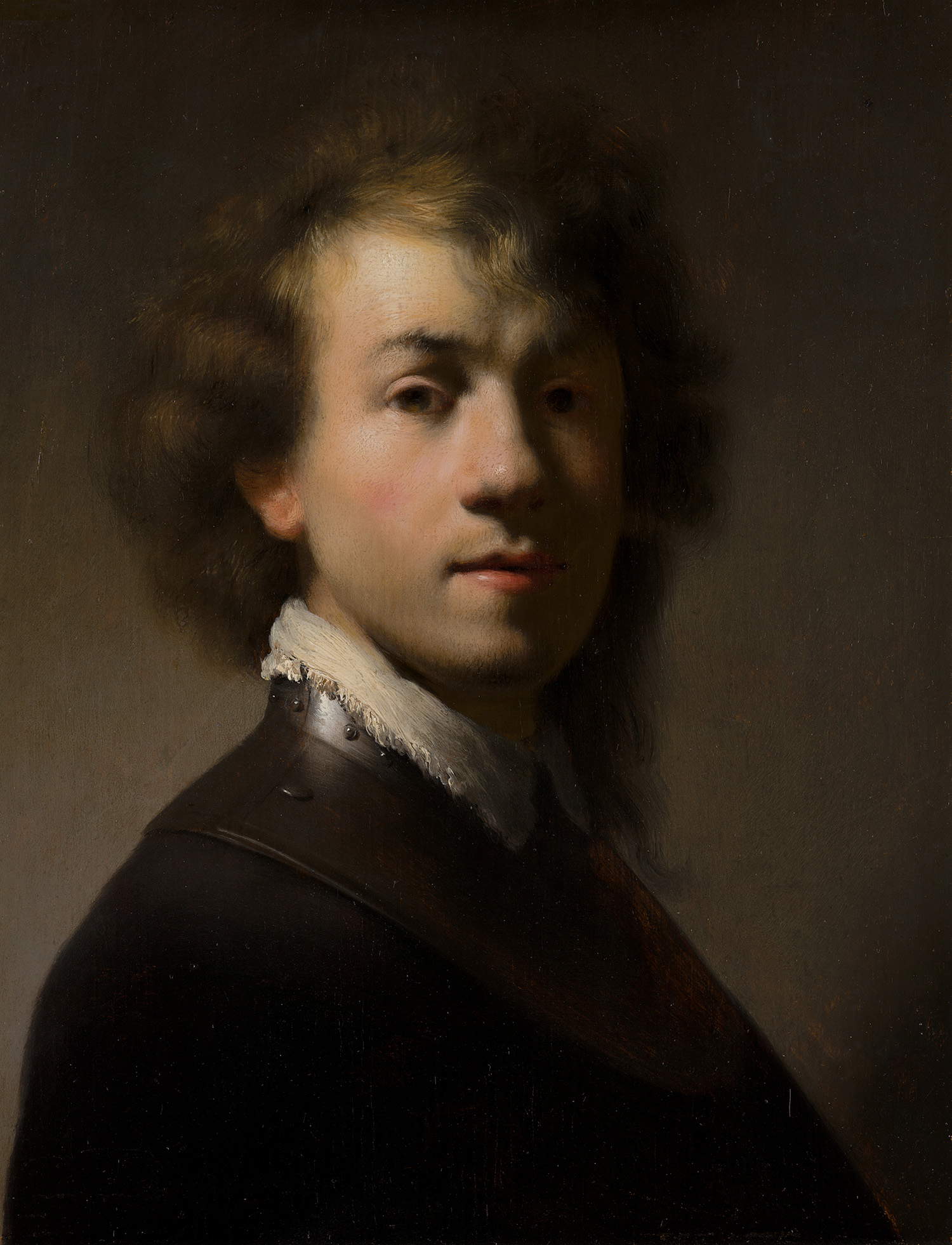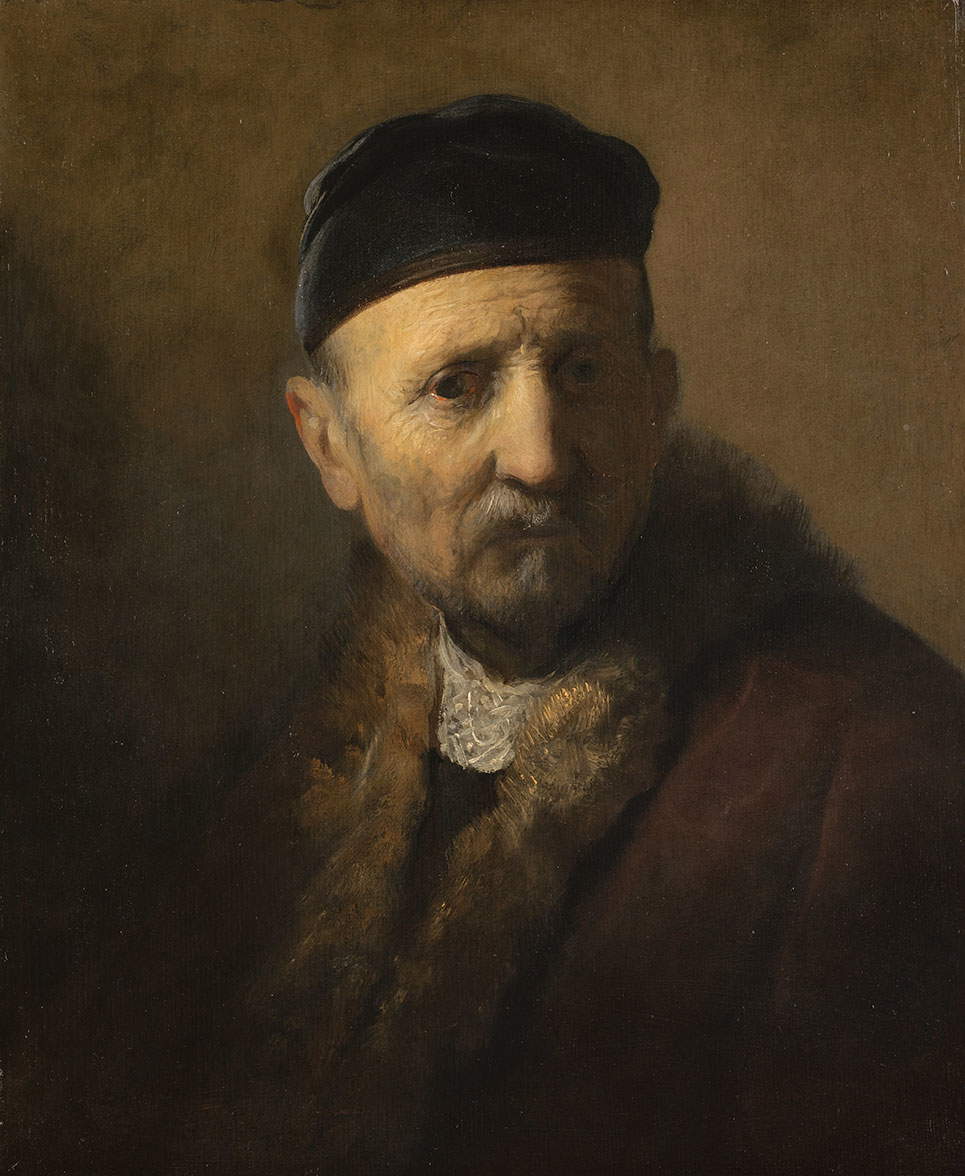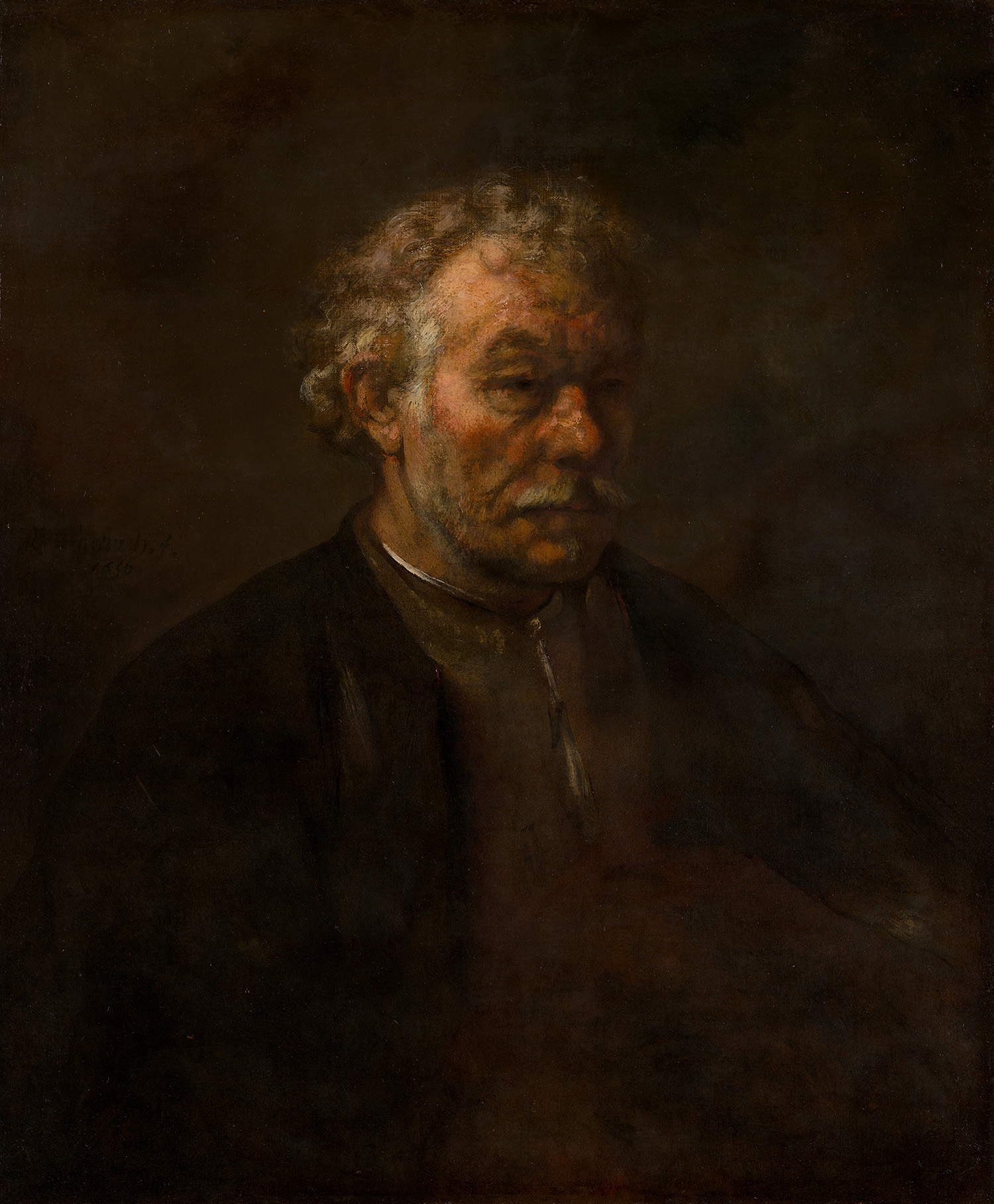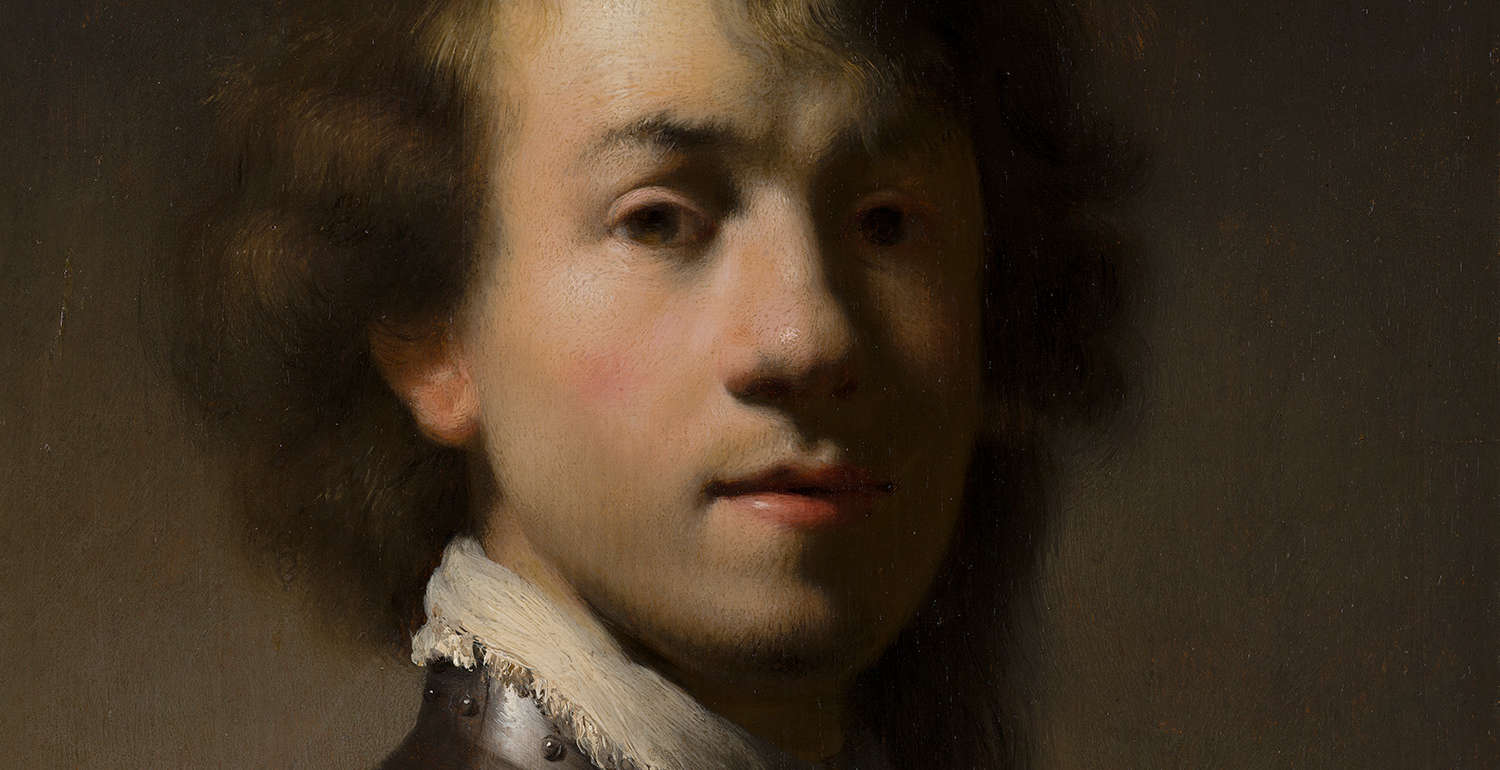The Mauritshuis inThe Hague, one of the most important museums in the Netherlands and home to an important nucleus of Rembrandt ’s works (with masterpieces such as The Anatomy Lesson of Dr. Nicolaes Tulp, theHomer, theSelf-Portrait from his last year of life, and theAndromeda) has revised the attribution of three works belonging to that set of works that were once purchased as Rembrandt, but have been strongly questioned in recent times. The three paintings in question ( Rembrandt’s Portrait of Rembrandt with ruff, the Tronie of an Old Man, and the Study of an Old Man) have recently been re-examined in the museum’s restoration laboratory using the most modern techniques (two of these works have also been restored), and for all three, the attribution to Rembrandt has been discarded.
Starting with Rembrandt’s Portrait of Rembrandt with the ruff, this is a painting that was purchased by Statolder Wilhelm V in 1768. For years, the painting was considered an absolute masterpiece of Rembrandt’s work, a self-portrait painted at a young age. A second version of the painting is preserved in the Germanisches Nationalmuseum in Nuremberg. Until twenty-five years ago, the German painting was believed to be a copy: a preparatory drawing was later found under layers of paint, an unprecedented discovery in Rembrandt’s production. This discovery prompted further investigation, and it was eventually discovered that the Rembrandt in the Mauritshuis, believed to be the museum’s masterpiece, was the copy, and that the Nuremberg painting turned out to be the original, the work of Rembrandt himself. Now, the painting has been restored and re-examined. The conclusion that the Mauritshuis version is a copy has been confirmed by the latest research.
According to experts at the Dutch museum, it is the work of a pupil of Rembrandt. His pupils practiced in the studio by copying the master’s works, and this activity was part of their training. The museum considered several names: the first possibility is Isaac de Jouderville, but this pupil was not good enough to produce the quality that is appreciated in this painting. The second possibility is Jan Lievens, a close friend of Rembrandt’s from Leiden, who, however, around 1630, the date the painting was probably executed, was a highly regarded painter, so it is highly unlikely that he copied a painting by his friend (copying was in fact reserved for second-rate artists). That would leave, according to the museum, Gerrit Dou: he is the painter most suspected. He was Rembrandt’s first pupil in Leiden, painted with great meticulousness and is considered the founder of the group of artists known as the “fijnschilders” (“fine painters”) of Leiden. However, according to the Mauritshuis, there is a lack of evidence to support an attribution to Dou. At present, therefore, the portrait must be classified as a copy from Rembrandt’s workshop.

The Tronie of an Old Man (“tronie” means, in seventeenth-century Dutch painting, a kind of ideal portrait, a study, a portrait of a person who does not exist in reality) depicts an old man with a mustache and goatee, his wrinkles painted with delicate precision, frowning at us, wearing a brown coat edged with fur and a black cap. Abraham Bredius, director of the Mauritshuis, bought the painting for his own collection in 1892, but then lent it to the museum, where it was displayed. In an article in the art magazine Oud Holland, Bredius referred enthusiastically to his acquisition, calling it “probably the most interesting portrait of Rembrandt’s father.” Abraham Bredius was in fact certain that this Rembrandt painting was a portrait of his father, Harmen Gerritszoon van Rijn. The man appears in several of Rembrandt’s works and in the works of artists with whom he was in contact. For centuries, it was believed to recognize Rembrandt’s father in prints, drawings and paintings.
That was until a drawing emerged in which the subject was definitely identified as “Harmen Gerrits Van Rhijn”: a man with a broad nose and thick beard could be seen there, looking very different from the “father” in the Mauritshuis painting. It is therefore believed that the Tronie is based on a model that Rembrandt paid to pose in his studio. This painting was also tampered with at some point in its existence: technical analyses have shown that the background was repainted long after it was first finished. A sample of paint was removed from the background with a scalpel, and under a microscope it was possible to observe the different layers of paint. An X-ray fluorescence spectrometer also enabled the museum to identify the chemical elements in the paint layers. We therefore know exactly what pigments the painter chose. The repainting probably dates to the early 18th century, was applied directly over the original paint, and has become very hard. Museum technicians have not yet been able to find a solvent to safely remove the repainting, but techniques are progressing rapidly. So, pending new developments, even for this painting the verdict is that it is the work of a collaborator in Rembrandt’s workshop.

Finally, there remains the Study of an Old Man. Director Abraham Bredius was overjoyed when the Mauritshuis purchased this painting in 1891. He called it “a specimen of the artist’s most mature period.” It was Rembrandt’s first late work in the collection, so it was an important acquisition. The elderly man in the painting was identified as Adriaen van Rijn, the artist’s brother. Still, doubts were raised about the painting’s authenticity. For many years it was difficult to say for sure, as the painting was in poor condition, with many layers of discolored repainting. Thanks to recent restoration work, the painting can now be reconsidered. An interesting result of the investigation conducted so far is the conclusion that Rembrandt’s signature is completely authentic. We are therefore faced with a dilemma, as doubts about the attribution persist. How is this possible? Rembrandt’s name was written when the painting was still fresh. So it is part of the original painting. The handwriting of the signature also seems entirely correct and does not differ from other Rembrandt signatures. However, there is something wrong with the dating, which was applied later with a different paint. The year is definitely not written in Rembrandt’s handwriting.
Now that the restoration is completed, it is possible to better investigate who painted it by looking at it and comparing it carefully. Compared to Rembrandt’s late self-portrait, displayed in the same, the nose is less prominent. The light hitting the nose in the self-portrait makes it stand out further. The left eye is also very mottled, and this is not just due to paint damage. Compared to theSelf-Portrait andHomer, also displayed in the same room, the Study of an Old Man is less successful. The museum believes it is the work of a pupil trying to imitate the master’s style. As for the signature dilemma, it was not unusual for a master to sign a pupil’s work: if it was painted in Rembrandt’s studio, it was still his “product.” With Rembrandt’s signature, a painting by a pupil could be sold as if it were a work by the master. At the moment, however, it is not clear to determine with certainty to whom the painting should be assigned. For the museum, therefore, it is perhaps the work of a student or workshop associate, but the idea that it may be a painting by Rembrandt himself cannot be ruled out, however.

 |
| Netherlands, Mauritshuis in The Hague revises attributions of three paintings given to Rembrandt |
Warning: the translation into English of the original Italian article was created using automatic tools. We undertake to review all articles, but we do not guarantee the total absence of inaccuracies in the translation due to the program. You can find the original by clicking on the ITA button. If you find any mistake,please contact us.